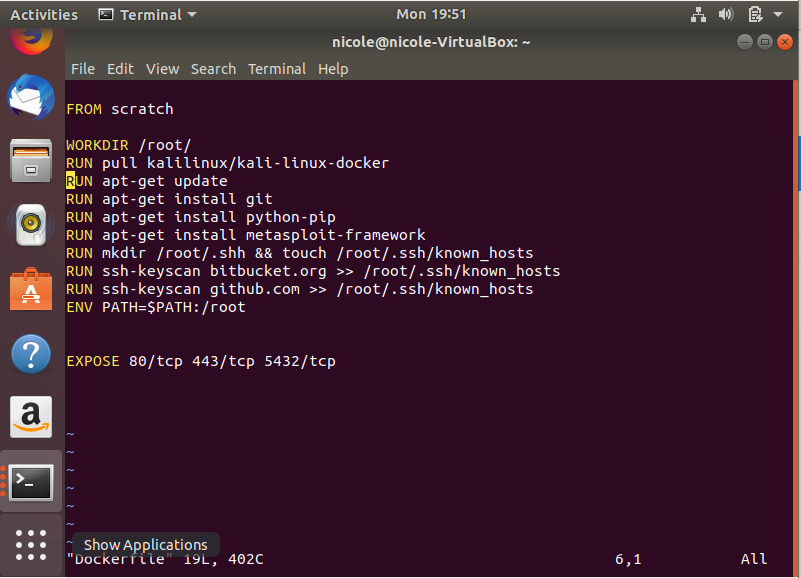
Or you can visit directly their docker page. You can visit the official Kali page and navigate to the container section and click on docker. Now, after installing docker, it is time to install Kali on docker. If you’re using any other operating system, click here. When the container runs, it prints a confirmation message and exits.

This command downloads a test image and runs it in a container.
Verify that the Docker Engine installation is successful by running the hello-world image:. Select the desired version and install: $ VERSION_STRING=5:20.10.13~3-0~ubuntu-jammy $ sudo apt-get install docker-ce=$VERSION_STRING docker-ce-cli=$VERSION_STRING containerd.io docker-compose-plugin To install a specific version of Docker Engine, start by list the available versions in the repository: # List the available versions: $ apt-cache madison docker-ce | awk '' 5:20.10.16~3-0~ubuntu-jammy 5:20.10.15~3-0~ubuntu-jammy 5:20.10.14~3-0~ubuntu-jammy 5:20.10.13~3-0~ubuntu-jammy To install the latest version, run: $ sudo apt-get install docker-ce docker-ce-cli containerd.io docker-compose-plugin Install Docker Engine, containerd, and Docker Compose. Try granting read permission for the Docker public key file before updating the package index: $ sudo chmod a+r /etc/apt/keyrings/docker.gpg $ sudo apt-get update Receiving a GPG error when running apt-get update? Your default umask may be incorrectly configured, preventing detection of the repository public key file. 
Use the following command to set up the repository: $ echo \ "deb \ $(lsb_release -cs) stable" | sudo tee /etc/apt//docker.list > /dev/null Install Docker Engine Add Docker’s official GPG key: $ sudo mkdir -p /etc/apt/keyrings $ curl -fsSL | sudo gpg -dearmor -o /etc/apt/keyrings/docker.gpgģ.

$ sudo apt-get update $ sudo apt-get install \ ca-certificates \ curl \ gnupg \ lsb-releaseĢ.

Update the apt package index and install packages to allow apt to use a repository over HTTPS:.








 0 kommentar(er)
0 kommentar(er)
